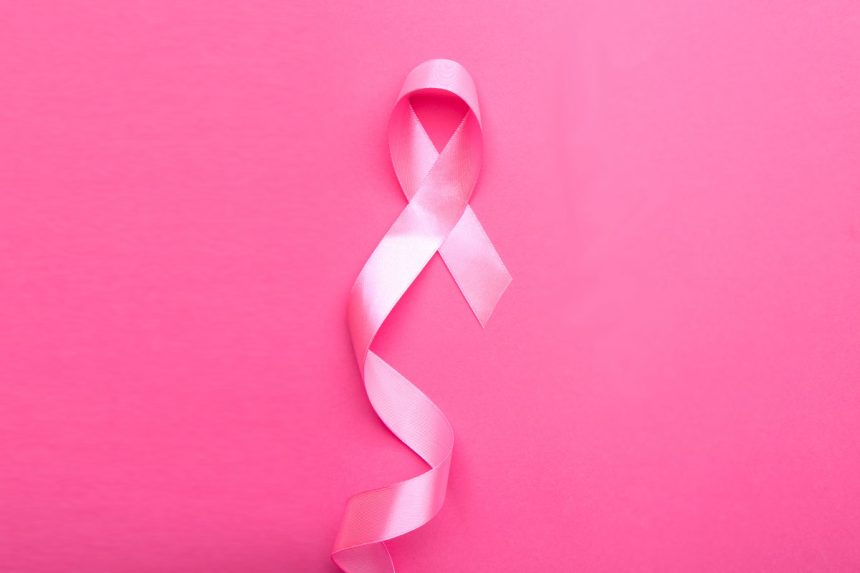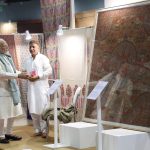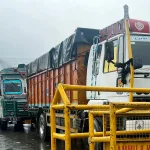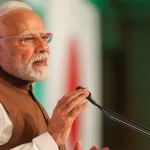At 53, Shahida(name changed) , a resident of North Kashmir, Kupwara woke up with a traumatised morning in June 2022. The nightmare unfolded when she experienced a pimple-type something on her breast. Immediately, “I went for a check-up to a doctor in Kupwara. He told me that it’s just a small pimple but not any sign of breast cancer. But I didn’t believe in those doctors.
So, my family decided to go to SMHS, Srinagar. There I got all the tests. When the Doctor broke out the news: “You are suffering from breast cancer with a Grade 3.” Even today the Echo of that sentence shivers down Shahida’s spine, her eyes filling with tears when she recalls the moment.
The impact of this news not only affected the life of Shahida but the whole family including her husband and her 3 sons grappled with this shocking news. For a few months, “ We couldn’t believe what was revealed to us,” Shahid’s eldest son vividly describes the initial disbelief. “I was shocked when I heard that my mother would be diagnosed with breast cancer but also felt disappointed about the Kupwara’s health system. If we didn’t take immediate steps, the situation could get worse at that time.
Acknowledging the profound difficulty of that phase, Shahida lamented, “ No doubt it was a hard and challenging period. But Alhumdullilah, that passed too. I was worried about my children a lot; Throughout my surgery, and my treatment, I prayed every day and made up my mind that I would never give up and would fight against the cancer.
Shahida is completely fine and is cancer-free and living a normal life by the grace of the Almighty. Shahid’s eldest son shares his experience, “She is eating well. She is feeling good. Her treatment is going on.
Every three months, she has to visit SKIMS. If this facility was in Kupara, we didn’t have to pay that much it would have been less than what we spent in those years.”
According to the study published by the Journal of Community Medicine, titled Epidemological Studies on Breast Cancer in Kashmir highlighted “In India, breast cancer is the second most frequent cancer among women. It accounts for one-fifth of all cancer types among Indian women and roughly 7% of the global breast cancer burden. While the number of women in the Kashmir Valley with breast cancer is sharply rising and ranks among the most frequent cancers.”
CURRENT SITUATION
Nowadays, the situation has completely changed. “Cancer number has increased a lot in Kashmir Valley, “ Dr Musaib Mushtaq, Senior Resident Department of Radiation Oncology SKIMS, Srinagar said. “As far as I know from last year, In 2023 approximately, we had like 7,000 – 8,000 cancer patients in SKIMS, Soura as per the data from the Regional Cancer Centre. In these two to four years, because the screening has increased, more cases have started coming. So, I can’t say individually, but we see a lot of cases of cancer in Kashmir valley.”
Breast cancer is one of the cancers predominantly found in females but can be found in males too. Cancer is an abnormal growth of any tissues or cells in our body. Normally every cell grows in our body but when there is an uncontrolled growth of any cells it becomes a cancer.
There are two types of Breast cancer, one that is not modifiable ( which is genetic) and a family history of Breast cancer that can’t be modified which is only 5-10% of cases of Breast cancer but 80-90% of breast cancer cases are environmental dependent.
“ Breast cancer can strike anyone over the age of 45 or 50, and I have personally witnessed cases of Breast cancer in teenagers. It is because the demography has changed. However, we don’t know the age at which the girl will be detected or produced Breast cancer. That’s why all the girls should know, all the women should know, how to self-exam Breasts, “ Dr Fiaz Maqbool Fazili, Senior Consultant Surgeon (Onco-Surgery; Breast) said. “There are some risk factors also if anyone in the family like first-degree relation, aunt, mother, and grandmother have a history of breast cancer are more predominantly, risk of breast cancer. There’s a gene in the family called cancer gene and particularly the breast cancer gene called BRCA1, BRCA2. So these people, when they have breast cancer in the family, all their sisters and siblings close should be screened for it.
HIGH PREVALENCE
Dr Manzoor Ahmad Mir, Senior Assistant Professor Head/ Coordinator Department of Bioresources, University of Kashmir, he said, “If we go across the globe then there is one in eight women are diagnosed with breast cancer. In India, the incidence has been 1 in 29 among the diagnosed patients is that of the breast cancer. Triple-negative breast cancer is the most heterogeneous and the second thing is that it has having worst prognosis which means treatment for this is very difficult. Kashmir has the second highest prevalence of triple-negative breast cancer, which is around 33 to 35%.”
The study titled Chemokines in Triple-Negative Breast Cancer Heterogeneity: New Challenges for Clinical Implications Elsevier (Impact Factor 17.012) conducted by Dr Manzoor etal underscored that as the most aggressive subtype of breast cancer, triple-negative breast cancer (TNBC) accounts for 15% to 20% of all cases and is highly variable, with links to both therapy response and the possibility of metastasis. On a molecular, pathologic, and clinical level, it is an extremely heterogeneous disease. TNBC has a worse overall survival rate after diagnosis and is significantly more likely to relapse than other subtypes of breast cancer.
CAUSE OF BREAST CANCER
“Main causes are numerous some are genetic causes some are food habits, lifestyle changes, the use of the adulterated food that we take normally these days. The likely reasons, Dr Manzoor said could include the use of chemicals, pesticides, gamma radiations or pollutants in the environment or many other things, unnecessary exposure to the radiations like X-rays, MRIs, and CT scans. So they’re having an impact on the cells and they cause the mutations. If the DNA can repair it, then there are no mutations. But sometimes the damage is so huge that our DNA repair system is not able to repair that system. Then because of this mutation in these genes, the cancer arises.
“Then there are some correlations which have been because in females there is menopause and puberty at that time both the chains usually in earlier times it was said that the people or the women who are going beyond 45 that is when the menopause comes then there are hormonal chains as well so then there is more predisposition of to those women towards breast cancer but now recent data from last 10-15 years suggests that people in their 30s or their 20s they have been also diagnosed with the breast cancer,” Dr. Manzoor said. “We get the adulterated food, ripening agents are used in the fruits, vegetables similarly a lot of antibiotics and other things are being used in the poultry. , even in the mutton, in the beef for those animals which are being slaughtered a lot of chemicals are being inserted into them. They are prone to cause mutations as well.’
TREATMENT AND AWARENESS
“Surgery, radiotherapy, chemotherapy, hormone therapy, and target therapy, which is also known as immunotherapy. First, the patients are given chemo, radio, and after that surgery is done after three weeks,” Dr Fazili said.”After surgery, we are given therapy and hormones. Following completion of treatment, patients undergo regular follow-ups, a process Dr. Fazili describes as “prolonged,” emphasizing the need for ongoing observation.
“At present, there are more than 300 drugs available for Breast cancer. The standard drug treatment is we give TKIs, thymidine kinase inhibitors. Our lab is also working in drug repurposing we had come up with one of the drugs like Adapalene or Cryptolepine,” Dr Manzoor said.
“ In Kashmir, there is a small amount of awareness about Breast cancer,” Dr. Manzoor said, “We need to address this issue as much as we can because no awareness campaign or events are being organized at the university or college level and its prevalence is rising in Kashmir and everybody has to be aware of the symptoms and the signs if they are getting detected early then the treatment is very easy but if they are detected late in stage second or third, then it becomes difficult.”
“We do not currently have any mammography in the district or sub-district, and I have not observed any coordinated efforts to install any. Mobile vans with mammography already installed are what we should have. They can visit isolated settlements and perform mammograms” Dr Fazili said.
THE NUMBERS
“ If we look at the data on breast cancer in 1980s the Breast cancer was at number three but in the last 20 to 30 years it has come now to number one with the highest incidence and triple negative Breast cancer being the most prevalent in Kashmir,” Dr Manzoor said.
At the Sher-I-Kashmir Institute of Medical Sciences in Soura, Srinagar. The study recorded 226 female instances of breast cancer. About 66% of these individuals had localized illness at presentation, 28% had regionalized disease, and 6% had distant (metastatic) disease.
DETECTING BREAST CANCER
Dr Manzoor said. “ The first signs of Breast cancer are when there is a persistent lump in any of the breasts, which is for long periods. Usually, breast cancer is in terms of pain but it can also show up as anything protruding from the nipple, a change in the breast’s shape, or neither. if there is Blood oozing out, redness, allergies near the nipples, or an unusual change in the size, shape, or appearance of the breast indicates that there may be a problem and that the person needs to be tested. However, the most common cause of breast cancer symptoms is usually a cyst that is either moving or stationary inside the breast.
(The writer is a recipient of the 2024 REACH MEDIA fellowships for Reporting on Non- Communicable Diseases.








